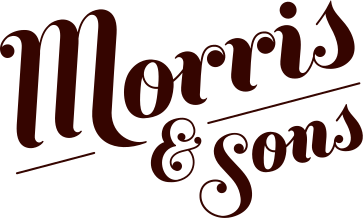Knitting Needle Sizes
Understanding Knitting Needle Sizes: A Guide for Beginners
Introduction: Knitting is a wonderful craft that allows you to create beautiful and cozy items, but if you're new to knitting, you might find the different knitting needle sizes a bit confusing. In this guide, we'll unravel the mystery behind knitting needle sizes and help you understand the various sizing systems used around the world.
-
The US and UK Knitting Needle Size System: The most common knitting needle sizing system used in the United States and the United Kingdom is based on numbers. US sizes range from 0 to 15, while UK sizes go from 14 to 000. We've compiled a handy conversion chart in our blog post (link to conversion chart) to help you navigate these sizes easily.
-
Metric Knitting Needle Size System: In addition to the US and UK systems, there is also a metric sizing system based on millimeters (mm). This system is used in many countries, including Australia. The metric sizing provides a precise measurement for the diameter of the needle. Again, we've included a conversion chart for your reference.
-
Understanding the Differences: It's important to note that the same number doesn't always correspond to the same size across different systems. For example, a US size 8 needle is not the same as a UK size 8 needle. This can be confusing, especially if you're following a pattern from another country. Always refer to the conversion chart to ensure you're using the correct needle size.
-
Needle Size and Gauge: Choosing the right needle size is crucial to achieving the correct gauge in your knitting project. The gauge refers to the number of stitches and rows per inch in your knitting. Using a different needle size can significantly affect the gauge and ultimately the final size of your project. Be sure to check the recommended gauge in your pattern and swatch with different needle sizes until you achieve the desired gauge.
-
Personal Preference: While needle size is important for achieving gauge, it's also worth considering personal preference. Some knitters prefer smaller needles for tighter stitches, while others prefer larger needles for a looser and more drapey fabric. Experimenting with different needle sizes can help you find your preferred knitting style.
Conclusion: Understanding knitting needle sizes is an essential skill for any knitter. Whether you're following a pattern from another country or exploring different knitting techniques, having knowledge of the various sizing systems will make your knitting journey smoother. Remember to refer to our conversion chart for accurate size conversions, and don't be afraid to experiment with different needle sizes to achieve your desired results.
| US Size | UK Size | Metric Size (mm) |
|---|---|---|
| 0 | 14 | 2.00 |
| 1 | 13 | 2.25 |
| 2 | 12 | 2.75 |
| 3 | 11 | 3.25 |
| 4 | 10 | 3.50 |
| 5 | 9 | 3.75 |
| 6 | 8 | 4.00 |
| 7 | 7 | 4.50 |
| 8 | 6 | 5.00 |
| 9 | 5 | 5.50 |
| 10 | 4 | 6.00 |
| 10.5 | 3 | 6.50 |
| 11 | - | 8.00 |
| 13 | - | 9.00 |
| 15 | - | 10.00 |
Knitting Needle Sizes Chart for Australia
Australia uses a different metric system for knitting needle sizes compared to the US and UK.
Here is the conversion chart for knitting needle sizes in Australia:
| Australia Size | Metric Size (mm) |
|---|---|
| 000 | 1.50 |
| 00 | 1.75 |
| 0 | 2.00 |
| 1 | 2.25 |
| 1.5 | 2.50 |
| 2 | 2.75 |
| 2.5 | 3.00 |
| 3 | 3.25 |
| 4 | 3.50 |
| 5 | 3.75 |
| 6 | 4.00 |
| 7 | - |
| 8 | - |
Please note that the above charts provide approximate conversions and may vary slightly between manufacturers.
Feel free to print out this knitting needle sizes conversion chart for your reference. Happy knitting
Team Morris and Sons








